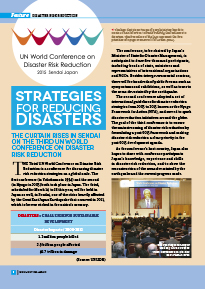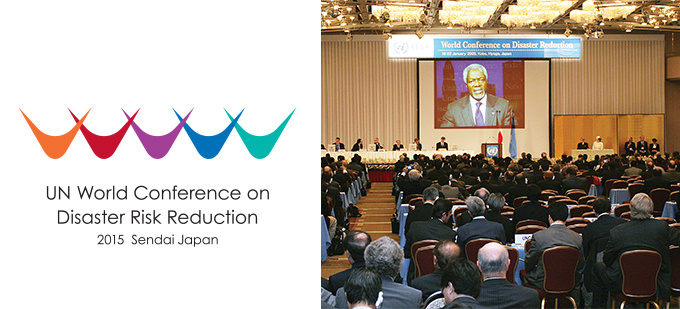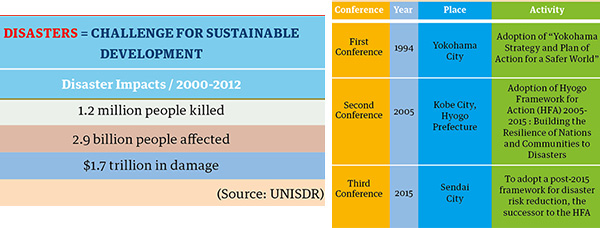Home > Highlighting JAPAN >Highlighting Japan March 2015>Disaster Risk Reduction
Highlighting JAPAN

Disaster Risk Reduction
Strategies for Reducing disasters
The curtain rises in Sendai on the third UN World Conference on Disaster Risk Reduction

The Third UN World Conference on Disaster Risk Reduction is a conference for discussing disaster risk reduction strategies on a global scale. The first conference (in Yokohama in 1994) and the second (in Hyogo in 2005) both took place in Japan. The third, scheduled for March 14 to 18 this year, will be held in Japan as well, in Sendai, one of the cities heavily affected by the Great East Japan Earthquake that occurred in 2011, which is forever etched in the nation’s memory.

The conference, to be chaired by Japan’s Minister of State for Disaster Management, is anticipated to draw five thousand participants, including heads of state, ministers and representatives of international organizations and NGOs. Besides intergovernmental sessions, there will be hundreds of public forums such as symposiums and exhibitions, as well as tours to the areas devastated by the earthquake.

The second conference adopted a set of international guidelines for disaster reduction strategies from 2005 to 2015 known as the Hyogo Framework for Action (HFA), and served to spark disaster reduction initiatives around the globe. The goal of the third conference is to ensure the mainstreaming of disaster risk reduction by formulating a post-2015 framework and making disaster risk reduction a clear priority in the post-2015 development agenda.
As the conference’s host country, Japan also hopes to share with conference participants Japan’s knowledge, experience and skills in disaster risk reduction, and to show the reconstruction of the areas devastated by the earthquake and the current progress made.
What does “the mainstreaming of disaster risk reduction” mean?
The human and economic toll of disasters is enormous. Ninety percent of victims worldwide are citizens of developing countries, and in some cases the cost of the damage can be even higher than their GDP. In the blink of an eye, disasters can destroy what took years to build. Creating societies capable of protecting people's lives and infrastructure is therefore essential to sustainable development.
Investing in disaster risk reduction before catastrophe strikes costs less than post disaster response and recovery. Japan’s goals are therefore to share with the world the idea that disaster risk reduction is not a cost but an investment, and to promote the incorporation of a disaster-risk reduction perspective into development projects and policies in all fields.
The two wheels of mainstreaming disaster risk reduction—post-2015 framework for disaster risk reduction and post-2015 development agenda
As mentioned above, the third conference will create a more effective successor to the HFA.
In September 2015, the post-2015 development agenda—the successor to the Millennium Development Goals (MDGs)—will also be formulated. The current MDGs do not have address for disaster risk reduction. It has been recognized that creating nations and communities resilient to disasters is essential to realizing sustainable development. Therefore, Japan’s goal for the post-2015 development agenda is to make disaster risk reduction a priority, and thereby accelerate the mobilization of necessary resources for disaster risk reduction.
To build a more sustainable international community, Japan seeks to promote the mainstreaming of disaster risk reduction, by accelerating the two wheels, namely the post-2015 framework for disaster risk reduction and the post-2015 development agenda.
© 2009 Cabinet Office, Government of Japan






